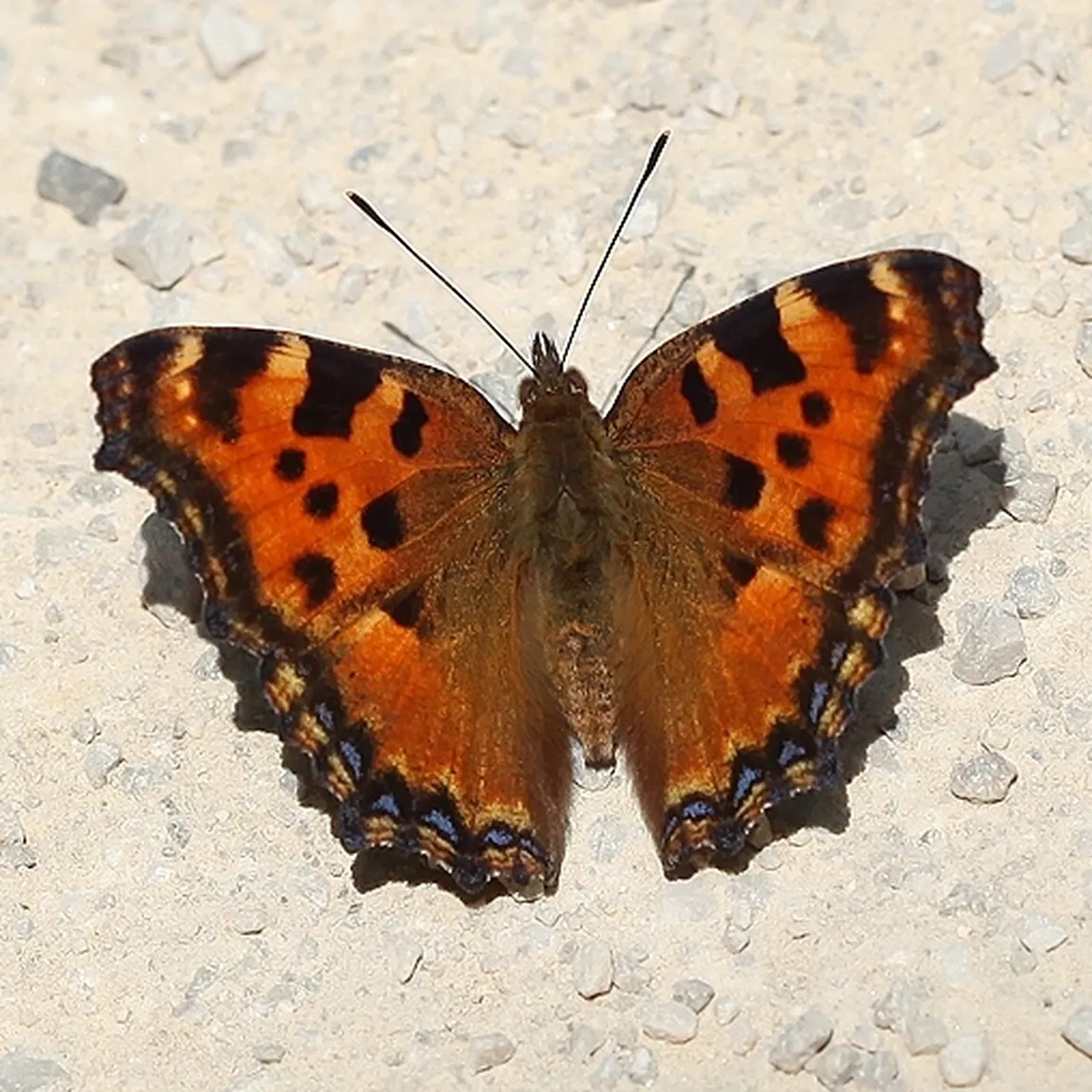Wingspan: 68–75 mm
Flight period: in two generations from May to September
Larval host plants: various species of deciduous trees, e.g., willows (Salix spp.), birches (Ulmus spp.), poplars (Populus spp.), and also with fruit trees such as pear and apple
The Large Tortoiseshell (Nymphalis polychloros) is a large butterfly and a good flyer, so it can be observed in virtually all habitats, although it is primarily tied to mosaic cultural landscapes.
The base colour of the upper side of its wings is brownish-orange, adorned with black spots of various shapes and sizes. Along the edge of the wings there is a wide black band with blue spots. The hindwings are also brownish-orange on the upper side, but there is only one black spot on them. The black line along the outer edge is clearly separated from the orange central area of the wings, and is adorned with blue spots. The underside of the wings is distinctly warning-colored. The dark brown and pale yellowish base color is interlaced with a pattern of black stripes and lines. The male and female are similarly colored, with the female somewhat larger.
The Large Tortoiseshell is a sun-loving species and prefers sunny places within the cultural landscape where meadows, orchards, fields, hedgerows, and copses intersect. Adult butterflies rarely visit flowers. However, we will be able to observe them on ripe fruit, which is their favorite food, or on damp ground where they sip water with dissolved minerals. Adults also overwinter, so such wintering individuals can be observed from February through May. It prefers to inhabit lower elevations, up to about 600 m above sea level, and is rarely seen higher.


